By Camie Roper
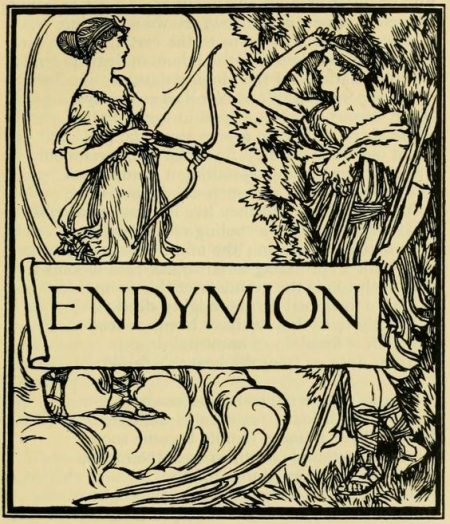 John Keats must have had quilts in mind when composing the romantic poem Endymion.
John Keats must have had quilts in mind when composing the romantic poem Endymion.
A quilt is the perfect combination of art and function. Its quilting holds three layers together, and adds beauty, motion and texture. First-timers entering the 2022 GAAQG Quilt Show have many options when it comes to quilting.
Aesthetically, straight-line designs (geometric shapes, for instance) are generally enhanced by curved designs, and vice versa. Whether hand or machine quilting, picture in your mind’s eye your quilting design superimposed on your quilt top. Will it be pleasing?
Should the item be conventionally quilted? Utility quilting is faster than hand-quilting, and just as sturdy, using larger needles and heavier threads with longer stitches. Crow Footing, cross-stitch, Mennonite Tack and Methodist Knot are examples, and can add an unusual touch or texture, sometimes only in specific areas. Many online videos demonstrate these techniques.
Will you quilt on a domestic machine or a long-arm? Will someone else do the work? It’s nice to select a design that complements your quilt. Density of stitches matters, as well. In general, quilts hang better when all areas of the quilt have the same density of stitching.
Crumb quilts and string quilts are popular. But keep grain in mind: straight-of-grain, cross grain and bias fabric joined can stretch out of shape in quilting. Long-arm quilter Jane Parker mentioned this in a recent Zoom guild Sew-In. In Jennie Doan’s “Crumb Quilt” video tutorial, she says joining many small pieces may require denser quilting to hold everything together.
Have you ever quilted with twin needles? If not, check your machine’s instruction manual and practice a bit. The look may surprise you. And, of course, your choice of thread – variegated colors, metallic, silk – will impact the final appearance of your quilt.
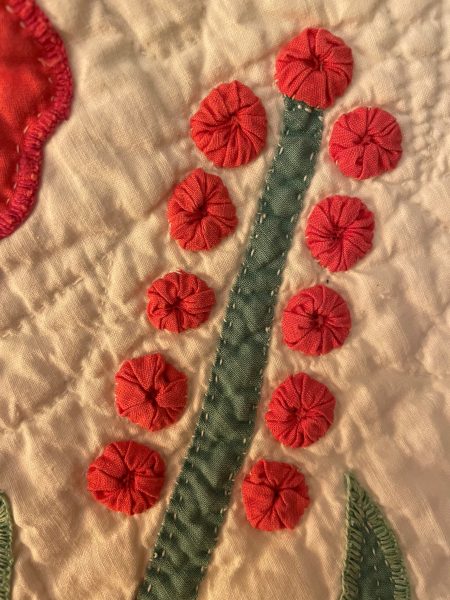
Some of my quilts show different kinds of quilting. My grandmother left me a hand-stitched red and green “Princess Feather” quilt. The quilting is stitched in half-inch, bi-directional diagonal grids and individual outline stitching. Here’s a detail.
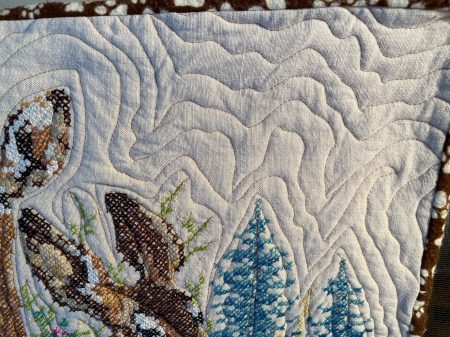
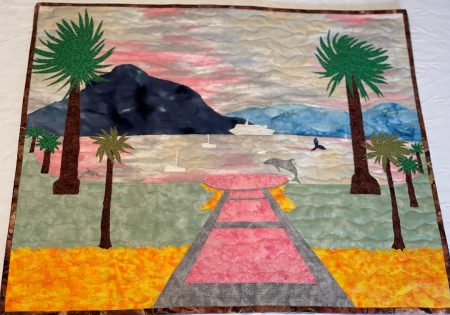
In creating landscape quilts, I use my Pfaff to free-form quilt around individual elements (clouds, trees, animals, water) to resemble wind and waves. Also, I echo quilt, outlining the elements, then incrementally moving away from the objects, like the concentric waves you see when throwing a rock into a lake.
In next week’s post, we’ll take a look at how unique labels can identify our quilts for posterity.
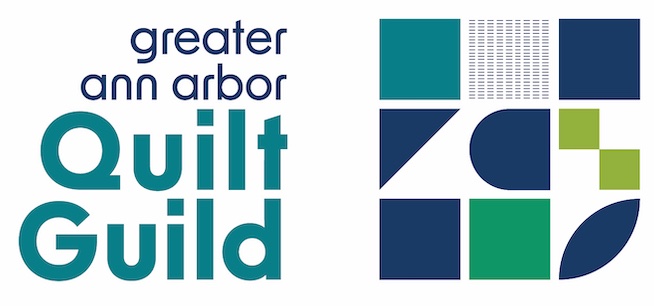

Thanks for all the useful information!
Katie, thanks for all your beautiful quilts throughout the years! This guild rocks!
Thanks for your comment, Katie!